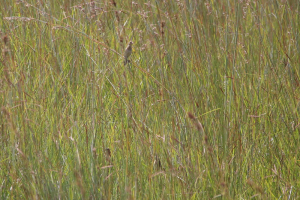Weaver species list / RELATED SPECIES: Fan-tailed Widowbird / Jackson’s Widowbird / Long-tailed Widowbird / Marsh Widowbird / Mountain Marsh Widowbird / White-winged Widowbird / Yellow Bishop / Yellow-mantled Widowbird
IUCN: Least concern Discovery: 016
Categories: long tail, pest, black and yellow bishops
Discovery


IntroductionThe Yellow-mantled Widowbird was formally named by Johann Friedrich Gmelin, a German naturalist. Gmelin described many new bird species in a book in 1789 in the style of Linnaeus’ publications, giving a brief description in Latin and a synonomy. Gmelin noted the locality for the Yellow-mantled Widowbird as “kingdom of Whidah, and to the river Senegal”.There were, however, several authors who referred to the Yellow-mantled Widowbird before Gmelin, but not providing a scientific binomial name. The earliest reference is by Francois Salerne, a French naturalist who translated the ornithological work of John Ray, an English naturalist. Salerne added many details and some new species in the translation, including the first reference to the Yellow-mantled Widowbird, in 1767. Salerne named it Le Gros-bec noir (Black Grosbeak) and listed the origin of this species as “Kingdom of Judah in Africa, and sometimes in Senegal”. This dual locality was copied by subsequent authors, but later restricted as Judah [Whydah] = Dahomey = Benin, probably because the range of the Yellow-mantled Widowbird in Senegal is far south of the Senegal River. Peter Brown, an English naturalist and illustrator, was the first to illustrate the Yellow-mantled Widowbird. He called it the Yellow shouldered Oriole and gave a description of the bird. He referred to Linnaeus (for the name Oriole) but did not provide a binomial name. Brown notes that his specimen was brought over from Holland by Thomas Pennant. Pennant travelled in Europe but not in Africa, so he would have obtained it from someone else. [note: in the species text, Brown misspelled Pennant as Tennant, but acknowledged Thomas Pennant in the Preface]. Statius Muller, who first described the Village Weaver, gave a Latin name for the Yellow-mantled Widowbird in 1776 but his name was invalid. Another colour illustration of the Yellow-mantled Widowbird is found in Daubenton 1783. Most likely a specimen of the Yellow-mantled Widowbird arrived in France from Benin together with other specimens, and was illustrated in the publications of Salerne and Daubenton but only formally described by Gmelin 13 years after the first illustration. Scientific citationLoxia macroura Gmelin 1789 Syst. Nat., 1(2):845 ‘in regno Whidah’ = Benin. Meaning of namesmacroura (Greek): Makros, long; -ouros, tailed. First English nameYellow shouldered Oriole (Brown 1776). Alternate namesGold-backed Whydah, Yellow-mantled Whydah, Yellow-shouldered Whydah, Yellow-shouldered Whydah, Yellowshouldered Widow. CollectorUnknown. Date collectedBefore 1767. Locality collectedin the kingdom of Whidah, & to the river Senegal = Benin. Type specimensNo type specimens known to survive. |
The above is based on Weaver Wednesday 2, a weekly series about the discovery of each weaver species.
This species text first appeared as Weaver Wednesday [133] – Discovery [16]: Yellow-mantled Widowbird on 2014-12-30
1. Basic biology


The above is based on Weaver Wednesday, a weekly series about weaver species.
This species text first appeared as Weaver Wednesday [98]: Yellow-mantled Widowbird on 2014-04-30
2. Breeding facts
| Pair bond Polygynous, with up to five females per male Breeding season Nest site Nest building Colony size Clutch size Egg colour Egg size Incubation Chicks and nestling period |
Breeding information based on Handbook of the Birds of the World, Vol. 15.
3. Photos of Weaver Nests
 Vm 25265 |
 Vm 25264 |
 Vm 24324 |
 Vm 24323 |
 Vm 24322 |
 Vm 18780 |
Thumb-nails of recent PHOWN records
[updated 16/10/2023]
